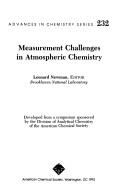| Listing 1 - 3 of 3 |
Sort by
|
Book
ISBN: 0841213399 Year: 1992 Volume: 483 Publisher: Washington, District of Columbia : American Chemical Society,
Abstract | Keywords | Export | Availability | Bookmark
 Loading...
Loading...Choose an application
- Reference Manager
- EndNote
- RefWorks (Direct export to RefWorks)
Pollution. --- Human ecology. --- Environmental chemistry --- Study and teaching.

ISBN: 0841221979 Year: 1992
Abstract | Keywords | Export | Availability | Bookmark
 Loading...
Loading...Choose an application
- Reference Manager
- EndNote
- RefWorks (Direct export to RefWorks)
Digital
Year: 2010 Publisher: Cambridge, Mass National Bureau of Economic Research
Abstract | Keywords | Export | Availability | Bookmark
 Loading...
Loading...Choose an application
- Reference Manager
- EndNote
- RefWorks (Direct export to RefWorks)
Fresh water supplies increasingly are under stress in many parts of the world due to rising populations, higher per capita incomes and corresponding consumption, greater environmental concerns, and the effects of climate change. Water rights and markets are part of the institutional menus for responding to these problems. We examine water markets in both Australia's MDB and the western US and their prospects for addressing water scarcity. The two regions share a number of important similarities including: climate variability that requires investment in reservoirs to make water available in low-rainfall periods; the need for internal and cross-border (state) water management; an historical major allocation of water to irrigators; increasing competition among different uses (agricultural, environmental and recreational in situ uses, urban demand); and the potential for water trading to more smoothly and quickly allocate water across these competing uses. A comparison of the two regions provides important insights about how economic factors can encourage more efficient water allocation, market structure and government regulation. We show that rights are more clearly defined and trading more common in Australia than appears to be the case in the western U.S. Longer periods of scarcity and hence, higher water values may explain this difference.
| Listing 1 - 3 of 3 |
Sort by
|

 Search
Search Feedback
Feedback About UniCat
About UniCat  Help
Help News
News